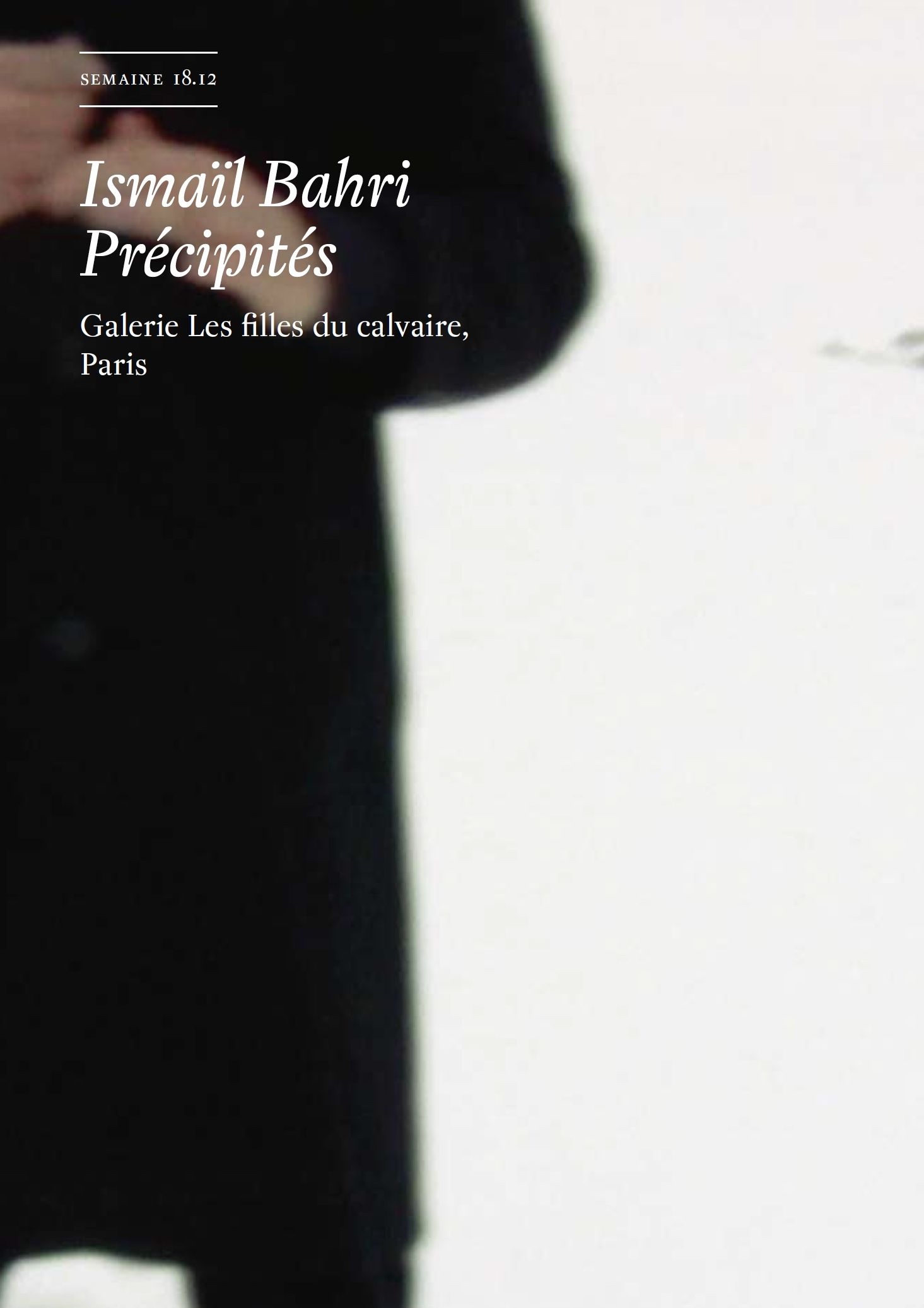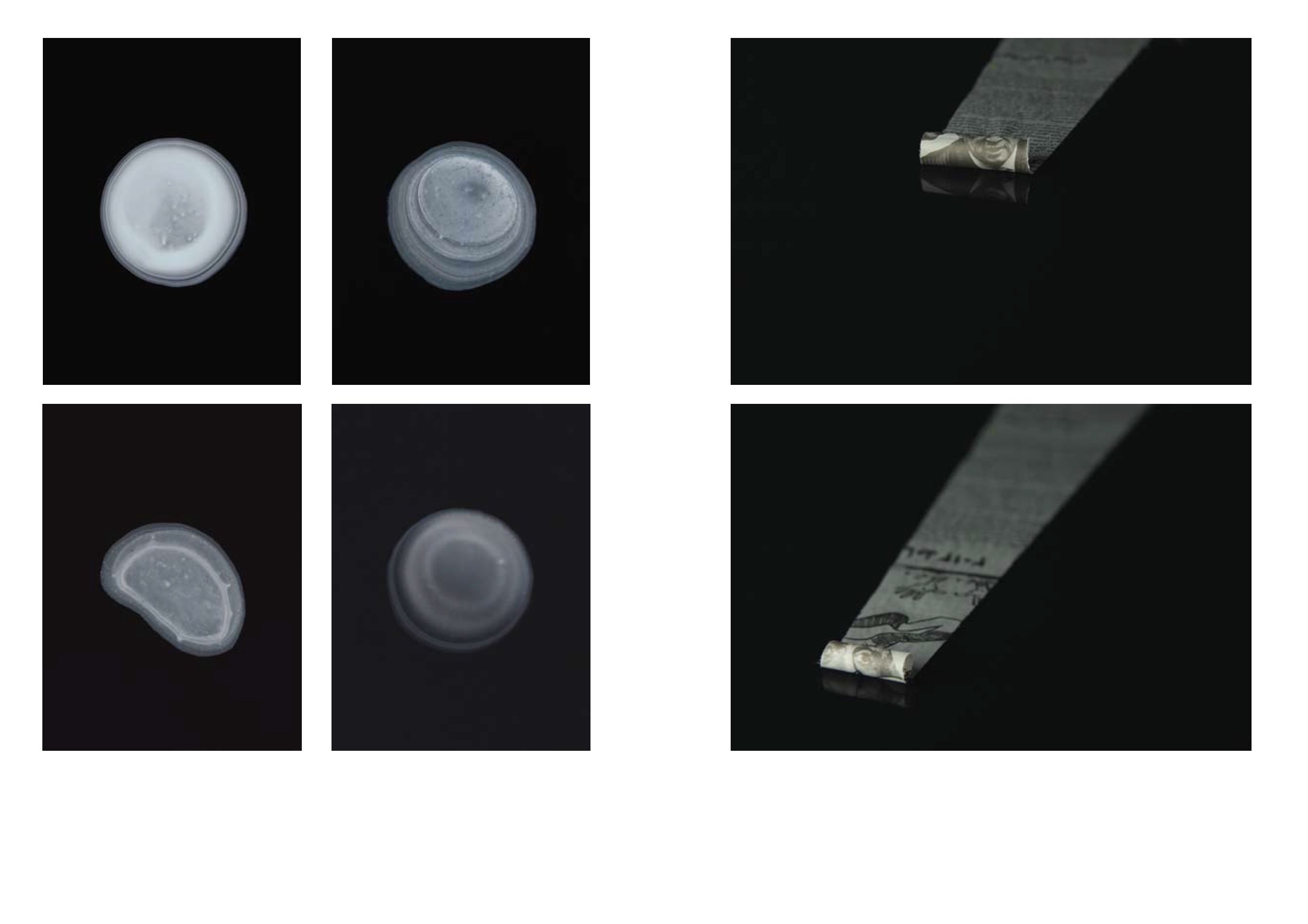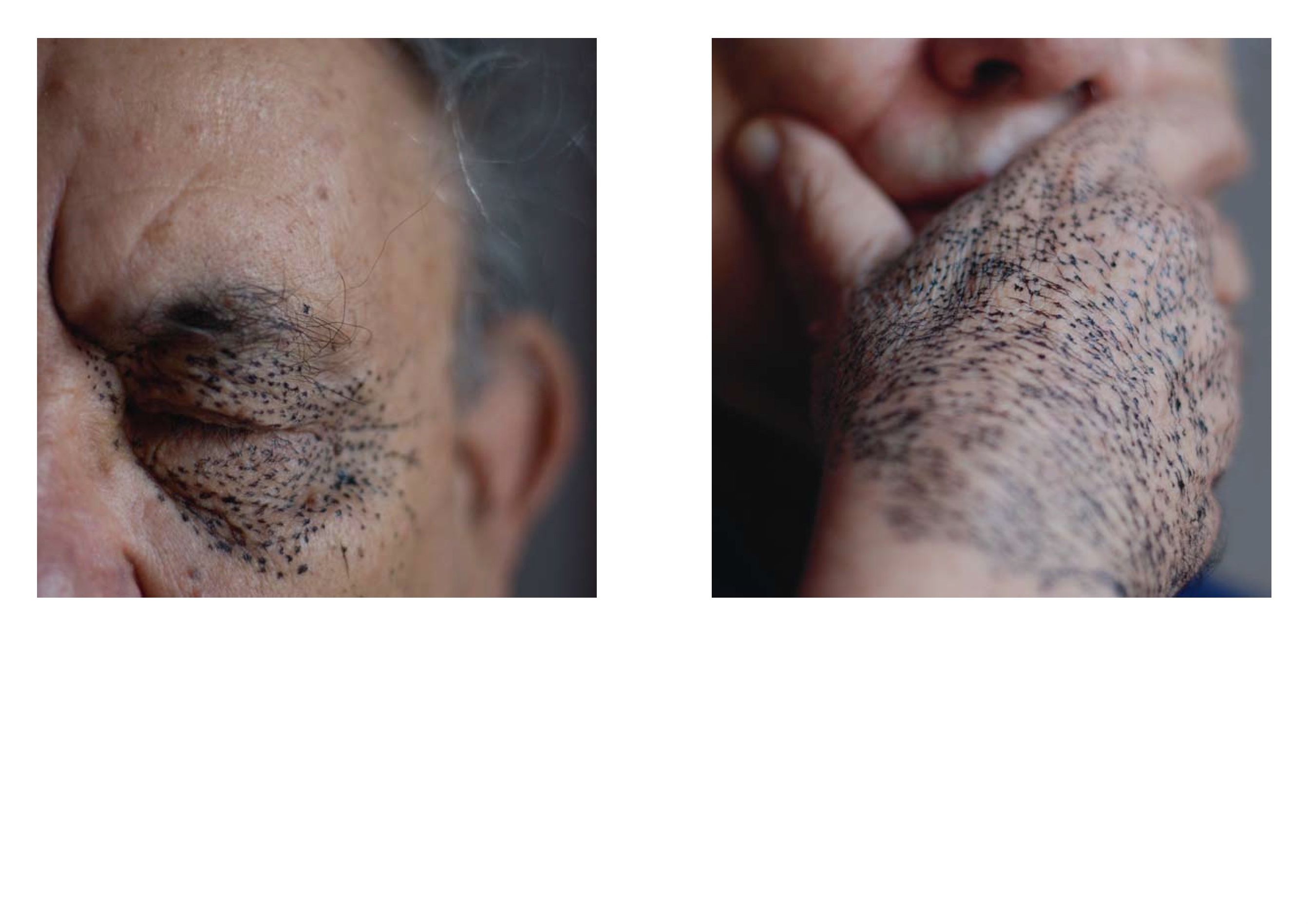Ismaïl Bahri, Precipitates
Guillaume Benoit
Semaine n° 300
Published and diffused by Analogues
April 27, 2012

At first you can’t see anything. A glass, a reflection, then a hand picking it up. Then, on the surface of the dark liquid, a few waves form, tremors. The glass overflows, the ink spreads over the skin, escapes, in fits and starts, over the thumb and the fingers. Seconds pass. The ink keeps on running away. It is almost unreal, it flows, it leaves its mark around it; the glass doesn’t empty. Infinitesimal, it’s just drops, and yet it has already invaded its surface. A few seconds more, then a building, a tree perhaps, moved into the negative of black ink, through the axis if symmetry of the reflection; the reverse image of our world emerges. The amazing journey of Orientations, an emblematic Ismaïl Bahri video, can start. Because in this journey across the city, with the surface of a glass as the sole skyline, all the issues of an unusual work are played out, a work which takes hold of the infinitesimal solely to show its possible giddiness.
Blurred sight, the blurredness of sight. Ismaïl Bahri’s works are haunted by shortsightedness, and set a point to turn into the epicentre of a tremor in progress. As a phenomenology of the infinitesimal, his approach self-imposes a landmark which magnetizes the eye, attaches it to it, and all around unfurls the world’s flow. Whether what is involved is the glass of ink in Orientations or the thread of Dénouement, the camera, just like the eye, seems to be grappling with the focal distance of the objects. But this prism through which the world is reflected does not reveal any “essence”; it merely helps to concentrate within it the immensity of the field. When the piece of thread in Dénouement jumps, when it is stretched and re-stretched as it is wound up, it is everything that happens outside it that is brought to the gaze. So it is in the relation between this thread and the world that the work fits, in the complex network of the imprints of the invisible on each perceptible element. Unlike a shrinkage, this concentration of the image in no way makes everything that is outside the field off-side. In playing relentlessly with space, in incorporating himself within it and merging with it in snippets (a hand, a silhouette, a shadow), the artist does not simply cast a shortsighted eye on things: he himself maintains a certain shortsightedness with regard to it. And in this ethereal cloud, he blurs the boundaries of his art, of the very place of the creator within the process, resisting with all his might any resumption by discourse. The dialogue embarked upon in Orientations with a passer-by, in which, when asked about his strange undertaking, he invites a different way of looking at the city, is eloquent—it helps to imagine him training his camera on a glass, his eyes on the control screen, strolling somewhat unsteadily in the streets of Tunis. This blurredness which develops around the artist is crucial: it prevents the works coming to an end, and turns them into organisms, which are nevertheless kept in a certain autonomy.
Happening. The fact is that Ismaïl Bahri organizes the advent of form, he creates arrangements for setting up the conditions of the event’s happening. The series Latence/Latency thus shows ink at the origin of this setting; on its own, it coagulates and becomes solidified on contact with air, forming on the surface of the glass a white circle on a ground that is detached from the black ground. These deposits then trace layers, regular and otherwise, which tally with the chronology of their hardening. Ismaïl Bahri’s artistic gesture goes beyond the mere creation of an image and grasps the form, the outcome of its existence and the time of its formation. In this sense, if he plays with codes, he stays aloof from scientific requirement; once worked out, the experimental procedure becomes the work’s nerve centre. In the video Dénouement, he subordinates its slow progress to the execution of an invisible constraint, in the first instance, and contrary to all effectiveness. In knotting a thread stretching over several dozen yards, his limping silhouette approaches, condemned only to progress at the whim of a disconcerting body language. Obedience to this rite forces the spectator to, in turn, withstand his own time-frame. Freed from any concern about “response”, Ismaïl Bahri has nothing scientific in his laboratory; his artistic knowledge makes the world his laboratory. He isolates an invisible frame and works its surface to bring out a deviance. As such, his work clashes with any actual idea of positivism; it is no longer a matter of demonstrating, but of de-monstrating, finding a way of leading to ‘monstration’—the act of showing-- without “displaying” a sense, by remaining removed from any vague impulse to express something. In a way, stripping the act of ‘monstration’ of its desire to impose a posture, a discourse. Or how to once again emphasize the possibility for the infinitesimal to create the event. Whence the importance of propagation by capillarity in his method. With the series of photographs titled Sang d’encre/Blood of Ink, the skin becomes a constellation. Unlike paint, as a fantasy of mastery of colour on the surface, ink colonizes, it does not sink into its subject, it runs on top of it, gradually erases it, and marks it with the seal of absence. As an intimate “adhesion” of the materials that we find in his Films, the pieces of newspapers unfurl, by the mere force of the liquid, drawing a line which tears the darkness, as if pushed by a life of its own. From this noiseless unfurling there emerges a novel narrative where the meaning, no longer determined by the nature of the ensuing events, is subordinated to the time-frame of their “happening”. So, just as the system of capillarity introduces the need for a force of cohesion in the elements, Ismaïl Bahri’s works re-enact this experience, in their ongoing dialogue.


The noise of the world. As such, if a form of resistance does exist in the artist, it is indeed that electric force which releases a thermal power in a circuit. By retaining a current, it merges with it and then frees it, totally transformed. Constantly in action, through the disturbance of the world, it presents this infinitesimal variation which makes the difference between its possibility and its impossibility. A process at the heart of Attraction, which invents a dreamlike dialogue between a hand and a shaft of light, sporadically, that organ that has become food for thought. The darkness becomes eloquent; absence fills the twilight like a zone of production of undefined forces. Whether trace or procreation, the imprints become bodies, and disappearance becomes a basic datum of the gesture. Henceforth, the end, indefinitely repeated, no longer has anything tragic about it. On the edge of meanings and symbols, it is in the end a silent and thoroughly living world which Ismaïl Bahri brings before our gaze. Its noise wells up in his work, like the basso continuo of invisibles. These invisibles are the events revealed by the experimental procedure. An idea at work in the video Ligne/Line, which fixes a drop placed on an arm, permeated by the pulse of blood in the veins. These infinitesimal spasms confuse ideas. What, in terms of blood flow or drop, is to be observed in this arrangement? This is an empty issue insomuch, once again, as the artist unveils the basic absence of hierarchy of the world, restoring its place to the encounter of different forms of matter which have nothing to prove, except their interaction, by experiencing themselves, themselves. So if this noise of the world keeps all its strangeness and mystery, through the intervention of this artist-cum-intercessor, it ineffably acquires a tremendous spirit of possibility. Each attempt does its utmost to find a point of balance for observing the world, reversing the principles to create the event on the surface and pierce its obviousness, obliterating its banality in order, in the end, to rediscover the dizziness of the infinitesimal.
